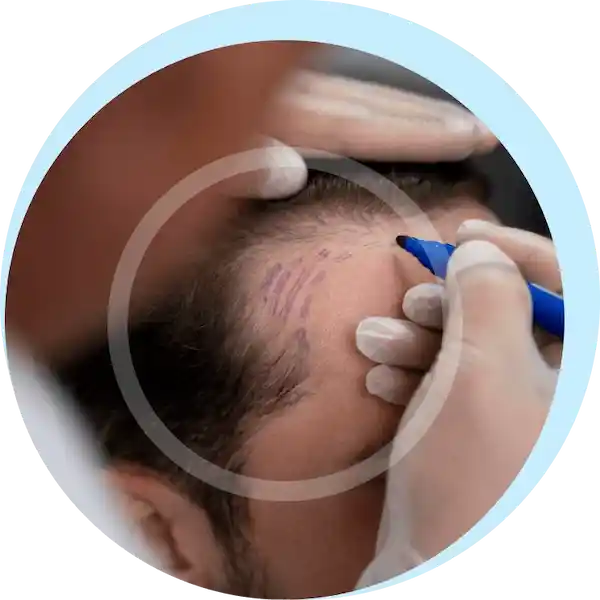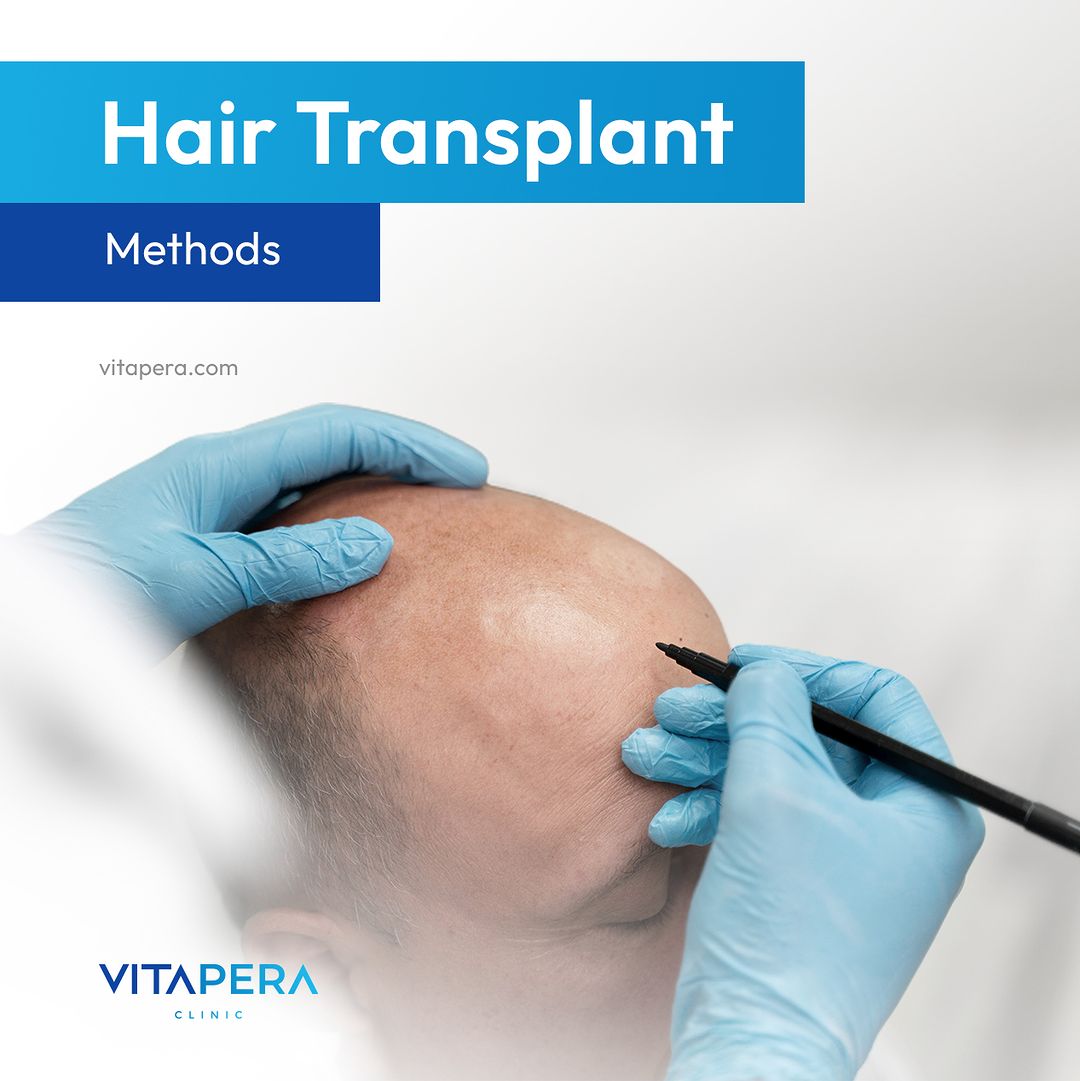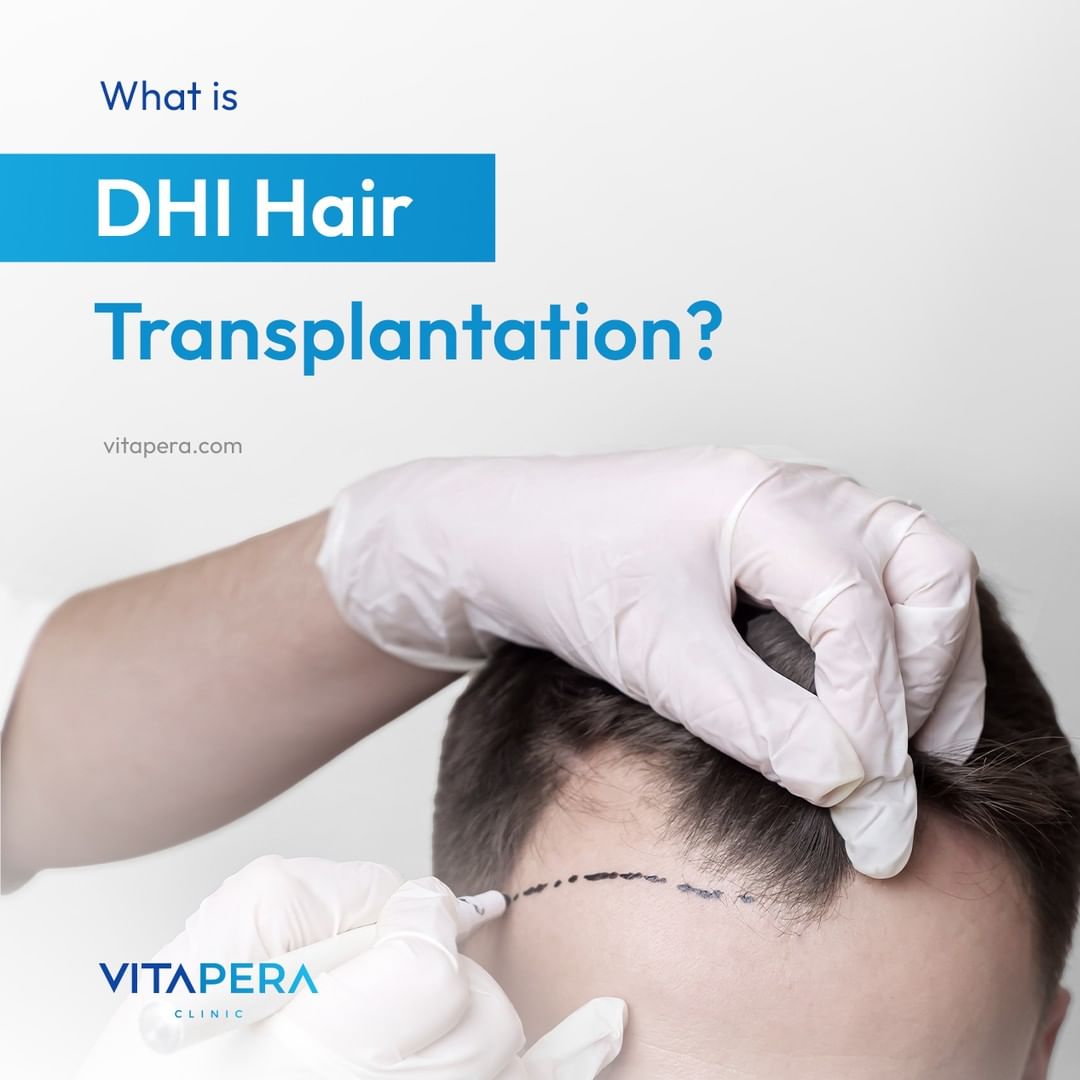
Everyone Has the Right to Look Better Make an Appointment Now!

Why Do Men Choose DHI Hair Transplantation?
Picture this: You’re a confident, stylish man who loves to make a statement wherever you go. You take pride in your appearance, and your hair plays a big role in your overall look. But lately, you’ve noticed your hairline receding or thinning, and it’s affecting your self-esteem. You want to reclaim your youthful and vibrant image, and that’s where DHI hair transplantation comes into play
DHI hair transplantation is like a superhero swooping in to save the day, bringing back your thick, full head of hair. Men choose DHI for a variety of reasons, but let’s explore some of the most common ones.
- First and foremost, DHI offers a natural and long-lasting solution to hair loss.
- Another reason men choose DHI is its precision and effectiveness.
- DHI also offers minimal downtime and a faster recovery compared to traditional hair transplantation methods.
- Furthermore, DHI hair transplantation is a personalized experience.
- Lastly, DHI offers a lifeline of hope for those struggling with hair loss.
So, if you’re a man looking to reclaim your confidence, make a bold statement, and turn heads wherever you go, DHI hair transplantation is the superhero you’ve been waiting for. It’s a journey of transformation, where you can regain your youthful appearance, rock any hairstyle with pride, and embrace a future filled with endless possibilities.
Remember, you deserve to feel amazing in your own skin and hair. With DHI hair transplantation, you can step into the spotlight and shine brighter than ever before! Contact Vitapera to get benefits if you wonder “Trichologist near me”!
We are always with you for your Health!
You can call us 24/7 for your questions and inquiries about all of our Treatments & Procedures.
DHI Hair Transplant Cost in Turkey?
A DHI hair transplant in Turkey will cost you between €2700 – €3500

Why Is DHI Hair Transplant Necessary?
Hair loss is a common concern that affects both men and women. Male pattern baldness, characterized by gradual hair loss at the hairline and crown, is a typical issue for men, often caused by genetics and hormone levels
On the other hand, hair loss in women is commonly due to factors such as hormonal changes, genetics, stress, or medical conditions. When hair starts falling out excessively, it can be distressing for both genders
Seeking the expertise of a “hair doctor near me”, also known as a trichologist or hair treatment specialist, for understanding hair fall reasons is crucial in diagnosing and addressing the underlying causes of thinning hair women
They can evaluate the condition and recommend suitable treatments if you wonder “My hair is falling out”, whether it’s for thinning hair in women, female pattern baldness, or other concerns like bald spots or hair loss after pregnancy.
Understanding the reasons behind hair fall, such as nutritional deficiencies or hormonal imbalances, helps in developing personalized treatment plans that may include DHI hair transplants or other appropriate interventions.
It’s important to remember that shedding a certain amount of hair is normal, but excessive hair shedding or hair falling out may require professional attention. By taking proactive steps and seeking the guidance of a hair specialist, you can address hair shedding, nurture the health of your hair roots, and explore suitable solutions for various hair loss conditions, such as female pattern hair loss or hair thinning men.
DHI vs FUE vs FUT: The Ultimate Comparison
Imagine you’re in a hair restoration superstore, exploring different options to bring back your glorious mane. Let’s unravel their strengths and find the perfect match for your hair restoration needs
- DHI, which stands for Direct Hair Implantation, is like a nimble ninja. It uses a special implantation pen to directly place each hair follicle in the desired area. It’s a precise and meticulous technique, resulting in a natural-looking hairline. DHI requires no prior creation of recipient holes, meaning less trauma to your scalp and a faster healing process. If you desire a highly accurate and efficient procedure, DHI is your stealthy hero.
- FUE, or Follicular Unit Extraction, is like an agile acrobat. With FUE, individual hair follicles are extracted one by one from a donor area, typically the back or sides of your head. It leaves behind tiny, nearly invisible scars, making it a great option for those who prefer to wear short hairstyles. FUE provides versatility, allowing for hair transplantation in different areas of the scalp, and it offers a faster recovery compared to traditional methods. If you value flexibility and a scarless outcome, FUE is your acrobatic savior.
- FUT, or Follicular Unit Transplantation, is like a strong and mighty warrior. It involves removing a strip of skin from the donor area, usually the back of your head, and then dissecting it into individual hair follicles. This technique allows for the transplantation of a larger number of grafts in a single session, making it suitable for individuals with advanced hair loss. FUT delivers exceptional hair density and can cover larger areas of baldness effectively. If you need maximum hair coverage and density, FUT is your heroic warrior
Remember, each technique has its own superpowers, and the best choice for you depends on your specific female hair loss pattern or men, goals, and personal preferences. Choose your hair restoration hero wisely, and get ready to unveil your newfound superpower—unleashing a head of hair that turns heads and makes you feel invincible!

Procedure Details: DHI Hair Transplant
Throughout the entire process, it’s important to remember that DHI hair transplant is a combination of science, artistry, and personalized care. The goal is to create a result that not only restores your hair but also enhances your overall appearance and boosts your confidence.
So, if you’re ready to embark on a journey towards a fuller head of hair, a DHI hair transplant awaits you. It’s a procedure that combines precision, creativity, and attentive aftercare to bring back your crowning glory. Get ready to watch as your new hair grows, blossoms, and becomes a testament to your transformation.
Remember, with DHI, you’re not just getting a procedure—you’re embarking on a path to rediscover your self-assurance and embrace a future filled with endless possibilities.
Harvest the Grafts
It’s like a delicate treasure hunt for your own hair. Skilled surgeons begin by carefully extracting healthy hair follicles, also known as grafts, from the donor area on your scalp. This donor area is typically located at the back or sides of your head, where the hair is genetically programmed to be more resistant to hair loss. Think of it as collecting the building blocks for your new hairline.
Open Canals in the Recipient Area
Here comes the architectural phase of the process. The experts create tiny canals or channels in the recipient area, which is where you want the transplanted hair to grow. These canals are like pathways for the grafts to find their new home.
The specialists meticulously design the canals to match the natural direction and angle of your existing hair, ensuring seamless integration of the transplanted hair. It’s like laying the foundation for a beautiful patch of hair.
Transfer The Grafts/Hair Follicles into the Canal
Now, it’s time for the magic of transplantation. With the help of a specialized tool called an “implanter” or “pen,” the surgeons delicately place each individual hair follicle directly into the prepared canals.
It’s like an intricate puzzle, with the grafts finding their perfect spots in the recipient area. This precise and direct implantation technique ensures optimal hair growth and a natural-looking result. Imagine the grafts being gently tucked into their new homes, ready to flourish.
Check Up and Aftercare
Your hair restoration journey doesn’t end with the procedure itself. After the transplantation, the medical team will provide you with detailed instructions and guidance for proper aftercare. This includes taking care of your scalp, avoiding certain activities that may disrupt the healing process, and following any prescribed medications.
Regular check-ups and follow-up visits will be scheduled to monitor your progress and address any concerns. Think of it as having a support team that guides you every step of the way, ensuring the best possible outcome.
Why Should I Opt for DHI Hair Transplant in Turkey?
Here are 7 important steps to help you get ready:
- Research and Consultation: Begin by researching reputable clinics and qualified hair transplant specialists. Schedule a consultation to discuss your goals, medical history, and any concerns you may have. This step sets the foundation for a successful journey.
- Follow Preoperative Instructions: Your hair transplant specialist will provide you with specific instructions to follow before the procedure. This may include avoiding certain medications, alcohol, and smoking, as well as adjusting your hair care routine. It’s crucial to adhere to these guidelines to optimize the success of the procedure.
- Plan Transportation and Accommodation: If you’re traveling for your DHI hair transplant, make travel arrangements in advance. Arrange transportation to the clinic and secure accommodation for the duration of your stay.
- Arrange Support: It’s helpful to have someone accompany you during the procedure and assist you afterward. They can provide emotional support and help with practical matters during your recovery. Inform your support person about the procedure and what to expect, so they can be prepared as well.
- Prepare Comfortable Clothing: Choose loose-fitting and comfortable clothing for the day of the procedure. Avoid tight collars or hats that may rub against the newly transplanted area. It’s important to feel at ease during the procedure and allow for easy access to the scalp.
- Emotional Preparation: Hair restoration is an exciting journey, but it’s natural to feel a mix of emotions. Take time to mentally prepare yourself for the procedure and focus on the positive outcome. Remind yourself of the newfound confidence and sense of well-being that await you.
- Follow Postoperative Instructions: Your hair transplant specialist will provide detailed postoperative instructions for aftercare. This may include information on scalp care, medication usage, and restrictions on certain activities. It’s vital to follow these instructions diligently to ensure proper healing and optimal results.
Remember, the preparation phase is an essential part of your DHI hair transplant journey. By being well-informed, organized, and emotionally prepared, you can approach the procedure with confidence and set yourself up for a successful outcome.
So, take these steps, envision your future with a full head of hair, and get ready to embark on a transformative experience. It’s a journey that will not only restore your hair but also boost your self-esteem and empower you to embrace life with renewed confidence.
What You Can Expect
Breast augmentation can take place either in a surgical center or a hospital outpatient facility. It is likely that you will be discharged on the same day, as the procedure seldom necessitates an overnight hospital stay.
On occasion, breast augmentation is performed under local anesthesia, allowing you to remain awake while your breast area is numbed. However, more commonly, the procedure is conducted under general anesthesia, rendering you unconscious throughout the surgery. Your plastic surgeon will discuss various anesthesia choices with you.
Why Choose Us?

Flight
Planning

Airport
Transfer

Hotel Accommodation

Best Treatment Service
Liposuction
Implant
Hair Transplant
Gastric Sleeve

Number of Operations
and Our Statistics
Our successful treatment statistics
Gastric Sleeve
Implant
Hair Transplant
Gastric Sleeve
Ask Questions
You can call us 24/7 for your questions and inquiries about all of our Treatments & Procedures.
Before Procedure Tips
- Smoking has an impact on follicle growth and the treatment’s outcomes, so it should be avoided for at least two weeks prior to the procedure.
- Avoid drinking green tea because it is a blood thinner that will make the transplantation fail by causing excessive bleeding both before and after the procedure.
- For at least four days prior to the transplant, abstain from coffee and other stimulants in general since they impair the anesthetic procedure.
- In order to prevent any issues that could arise before or after the operation, it is advised to have a good, balanced meal prior to the procedure.
- Stop using drugs like aspirin and ibuprofen combos, which thin the blood.
- Your healthcare provider who is monitoring your health must be aware of any medications you are taking for a specific disease, such as diabetes, hypertension, or another ailment.
After procedure Tips
- For at least 48 hours, you should cover your scalp with bandages.
- Commit to take the meds your doctor has given in order to aid in your recovery.
- You make every effort to maintain your head straight and avoid bending it.
- After the procedure, wait at least 72 hours before washing your hair.
- For five days, you must spend your nights propped up on two pillows in a semi-vertical position.
- For at least a month, you should avoid direct sunlight and unfavorable weather conditions including heat, excessive humidity, and rain.
- To prevent harm to the hair follicles, use caution when putting on or removing your garments.
- For three months, you shouldn’t swim in the ocean, and for two months, you shouldn’t swim in a pool.
- After surgery, you should abstain from smoking for at least two months.
- When washing your hair, use the medicinal shampoo we give you and stay away from any chemical shampoo.
Overview of DHI Hair Transplant

Anesthesia
Local

Duration of
Intervention
3H for 1000 implants

Sports
Activity
Recovery
14 Days

Define
Result
6-9 months

Return to
Social Life
1 week

Return to
Work
10 days

Hospitalization
No Need

Average
Pain After
3 Days
0-1
Frequently Asked Questions
Is DHI Better than FUE?
Both DHI and FUE are effective hair transplant techniques, but they have some differences. DHI offers direct implantation of hair follicles, providing precise and natural-looking results. FUE, on the other hand, involves the individual extraction of grafts.
The choice between DHI and FUE depends on your specific needs and preferences, so it’s best to consult with a hair transplant specialist to determine which technique is most suitable for you.
Is DHI Better than Sapphire FUE?
DHI and Sapphire FUE are both advanced hair transplant techniques. DHI uses a specialized implantation pen, while Sapphire FUE uses blades made of sapphire. Both techniques can produce excellent results.
The choice between them depends on various factors, such as the surgeon’s expertise, your hair loss pattern, and your personal preferences. Consulting with a specialist will help determine the best approach for you.
How Successful Is DHI Hair Transplant?
DHI hair transplant has a high success rate when performed by skilled and experienced professionals. The success of the procedure depends on factors such as the surgeon’s expertise, the quality of grafts, and your individual hair characteristics. When performed correctly, DHI can result in natural-looking hair growth that lasts a lifetime.
How Much Does DHI Cost in Turkey?
The cost of DHI hair transplant in Turkey can vary depending on factors such as the clinic, the surgeon’s expertise, the number of grafts required, and any additional services included. Generally, DHI in Turkey is known for being more affordable compared to many other countries, offering high-quality results at a relatively lower cost.
Does DHI Heal Faster?
DHI’s direct implantation technique minimizes trauma to the scalp, leading to a faster healing process compared to traditional methods. However, it’s important to note that individual healing times can vary. Proper postoperative care, following the surgeon’s instructions, is crucial for optimal healing and recovery.
What Is the Disadvantage of DHI?
One potential disadvantage of DHI hair transplants is that they can be a time-consuming procedure since each hair follicle is individually implanted. Additionally, DHI may require a higher level of expertise and skill from the surgeon to ensure the precise placement of grafts. It’s essential to choose a qualified and experienced specialist to minimize any potential disadvantages.
Can a DHI Hair Transplant Fail?
While DHI hair transplants have a high success rate, like any surgical procedure, there can be risks and potential complications. Factors such as poor postoperative care, underlying health conditions, or unrealistic expectations can affect the outcome. However, with proper planning, skilled surgeons, and adherence to aftercare instructions, the chances of failure are significantly minimized.
Does DHI Look Natural?
Yes, DHI hair transplants aim to provide natural-looking results. The direct implantation technique allows for precise placement of grafts, mimicking the natural hair growth pattern. When carried out by skilled surgeons, the transplanted hair should blend seamlessly with your existing hair, giving you a natural appearance.
Does DHI Leave a Scar?
Unlike other hair transplant techniques, DHI does not leave a linear scar since it does not involve the removal of a strip of skin. The implantation process uses tiny incisions that heal quickly and leave minimal scarring, if any. The scars are typically small and not easily noticeable.
Does Hair Grow Back After DHI?
Yes, the transplanted hair follicles in DHI are taken from areas of the scalp that are genetically resistant to hair loss. As a result, the transplanted hair is expected to grow and continue to grow throughout your lifetime, similar to your natural hair.

You can contact us for more detailed information.
Contact Now



